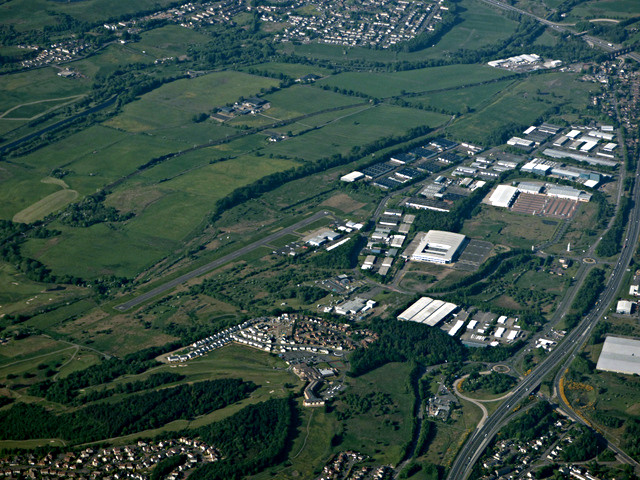Westerwood on:
[Wikipedia]
[Google]
[Amazon]


 Westerwood is an area in the north-east of
Westerwood is an area in the north-east of 
 Historically, Westerwood is the site of a Roman Fort on the
Historically, Westerwood is the site of a Roman Fort on the 


 Westerwood is an area in the north-east of
Westerwood is an area in the north-east of Cumbernauld
Cumbernauld (; gd, Comar nan Allt, meeting of the streams) is a large town in the historic county of Dunbartonshire and council area of North Lanarkshire, Scotland. It is the tenth most-populous locality in Scotland and the most populated t ...
in North Lanarkshire
North Lanarkshire ( sco, North Lanrikshire; gd, Siorrachd Lannraig a Tuath) is one of 32 council areas of Scotland. It borders the northeast of the City of Glasgow and contains many of Glasgow's suburbs and commuter towns and villages. It als ...
, Scotland. Historically it was the site of a Roman Fort of which a video reconstruction has been produced. In the past two decades, new housing developments have been built around the Westerwood Hotel and Golf Course. The golf course, which was designed by Seve Ballesteros
Severiano Ballesteros Sota (; 9 April 1957 – 7 May 2011) was a Spanish professional golfer, a World No. 1 who was one of the sport's leading figures from the mid-1970s to the mid-1990s. A member of a gifted golfing family, he won 90 inte ...
and Dave Thomas, is located on the north side of the town, close to Cumbernauld Airport
Cumbernauld Airport is a general aviation airport located northeast of Glasgow at Cumbernauld in North Lanarkshire, Scotland. The airport is primarily used for the training of fixed wing and rotary wing pilots; it also boasts a helicopter ch ...
. Westerwood Community Council was set up for local residents and a committee has been appointed. Neighbouring villages which are outside of Cumbernauld include Dullatur to the north-west and Castlecary to the east.

Roman Heritage
Antonine Wall
The Antonine Wall, known to the Romans as ''Vallum Antonini'', was a turf fortification on stone foundations, built by the Romans across what is now the Central Belt of Scotland, between the Firth of Clyde and the Firth of Forth. Built some ...
. Its neighbouring forts were Croy Hill to the west and Castlecary to the east. At Tollpark, is one of the best preserved continuous sections of the whole Wall, between the forts of Castlecary and Westerwood. There may have been a signal tower at Garnhall from where both Westerwood and Castlecary forts are likely to have been visible. A kissing gate behind Castlecary Hotel provides access to this section of the wall to the east. Parking for the section of the wall to the west can be found at Dullatur or Croy. Many Roman forts along the wall held garrisons of around 500 men. Larger forts like Castlecary and Birrens
Blatobulgium was a Roman fort, located at the modern-day site known as Birrens, in Dumfriesshire, Scotland.
Name
Blatobulgium is recorded in the Antonine Itinerary. The name derives from the Brittonic roots ''*blāto-'' 'bloom, blossom' or ''*bl ...
had a nominal cohort of 1000 men but probably sheltered women and children as well although the troops were not allowed to marry. There is also likely to have been large communities of civilians around the site. Westerwood was excavated in 1932 by Sir George Macdonald who wrote about it. It was also excavated in 1974 and 1985-8. Finds near Westerwood include a distance slab depicting a sea-deity and a naked, tied, captive and an uninscribed altar which were found at Arniebog. The slab can now be viewed at the Hunterian Museum in Glasgow. Other artefacts include a diamond patterned stone and a grey, buff jar. A religious stone showed a relief of an engorged phallus
A phallus is a penis (especially when erect), an object that resembles a penis, or a mimetic image of an erect penis. In art history a figure with an erect penis is described as ithyphallic.
Any object that symbolically—or, more precise ...
over the inscription EX VOTO "the result of a vow". It was found in 1725 but has since been lost. It had a second inscription: NVX "the night". Also a centurion called Verecundus, and his wife, dedicated an altar to Silvanus and the Sky which was recovered at Westerwood. Pottery found at Westerwood is unlike any other pottery found on the Antonine Wall. It has been suggested that the course pottery was made locally by a single potter at Westerwood.

References
{{Areas of Cumbernauld Areas of Cumbernauld Forts of the Antonine Wall Roman legionary fortresses in Scotland